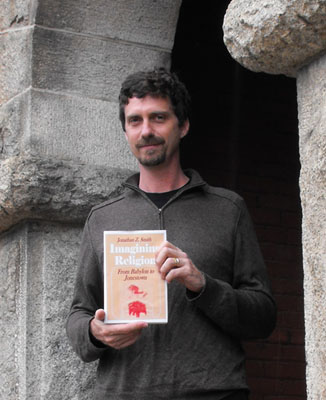Dr. Gregory Price Grieve
Associate Professor, 2008
Professor, 2016

Imagining Religion: From Babylon to Jonestown by Jonathan Z. Smith
J. Z. Smith’s Imagining Religion has forever changed my approach to religious studies. In this work, Smith points the academic study of religion in a new theoretical direction, one neither theological nor willfully ideological. Using diverse examples—from Maori cults in nineteenth-century New Zealand to the apocalyptic events of Jonestown—Smith shows that there is no intrinsic data for religion, and that “religion” is the creation of the scholar’s study. Simply put, his chief insight is that while people have had their entire history to imagine deities and modes of interaction with them, we have only had the last few centuries in which to imagine religion. For Smith, then, “religion” is not a thing out there in the world, but a second-order reflective act of interpretation that organizes a staggering amount of phenomena and human experiences. In his analyses, religion emerges as the product of historically and geographically situated human ingenuity, cognition, and curiosity. For Smith, the bottom line is that religion is one of the decisive but wholly ordinary ways people create, and make sense, of the cultural worlds in which they live.